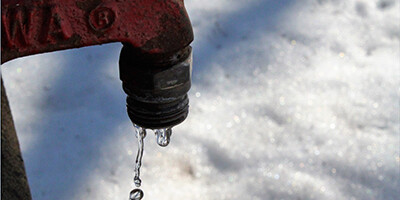Suffering from mold on wall?
What exactly is mold in the home? How do you recognize mold on the wall and what can you do about it? What are the consequences for your home and your health? Find out everything you need to know about mold on walls.
Quickly find your answer:
Free diagnosis
Not sure if you suffer from condensation? Our experts will be happy to help. Via a free moisture analysis we can determine exactly what problem you are facing. A good moisture diagnosis is essential in order to find an appropriate solution.
What exactly are molds on the walls?
Mold on the wall can come in different colors and shapes. The most common types are white mold, green mold and black mold. Mold itself is not a moisture problem, but often a moisture problem is at the root of that mold on the wall. Each of these moisture problems has its own solutions. We'll go into that in more detail later.
How do I recognize mold on the wall?
There are several symptoms that can indicate mold on the wall. The most obvious is black or green deposits in the recesses and corners of the room. You also have something like white mold, but this kind is less easy to recognize. Usually, it gives a white appearance on the walls.
Besides the visible symptoms on the wall, there are some other things that may indicate that you are suffering from mold on the wall.
What are the consequences of mold on the wall?

Effects of mold on the wall on your health
As you might suspect, mold (and specifically black mold) sometimes have major health consequences. Especially for children, the elderly and people who already have underlying pulmonary or respiratory complaints. An example would be people with asthma. The spores of black mold can cause a variety of health problems, including:
Consequences of mold on the wall on your home
But it's not just a drain on our health. Our house also suffers from mold on the wall. The longer mold grows on the wall, the weaker that wall becomes. In the best cases, the paint starts to peel off, but if your house is a wood-frame construction, it can also affect that structure.
The causes of mold on walls
and their solutions
If you are struggling with mold on the wall, it is very wise to address it (or have it addressed). However, there is no comprehensive method to fight mold on walls, and removing mold on the wall is not enough. To get rid of mold in your home for good, follow these steps:
We discuss the most common causes of mold on the wall, and their corresponding solutions. We strongly recommend using a moisture expert engage in the process of finding out the cause, as he or she assures you of a correct diagnosis.

1. Penetrating damp
In case of penetrating damp the outer walls of the house are the main culprit. At that point, these can no longer handle the moisture from outside - often a lot of rain - so the wall absorbs that moisture. Penetrating damp causes mould in random places in the house, but only on the outer walls. The best solution to persistent moisture is to apply a waterproof layer to the house's facades. This will stop moisture from getting inside.

2. Rising damp
Also rising damp can cause you to deal with mold on the wall. In this case, the mold spots start at the bottom of the wall, and make their way upward. Rising damp is caused when groundwater pressure is too high and/or the water barrier in the walls is deficient. The most appropriate solution for rising damp is to have your walls injected..

3. Condensation
Condensation occurs when warm air condenses on a cold place in the home. Mold due to condensation often occurs in places like the kitchen or bathroom, in other words places where warm moisture can settle on the cold wall. The solution to a problem like condensation, is to install a good ventilation system. That ventilation system moves the steam away from the room so it has no chance to condense on the walls.

4.Thermal bridges
Also thermal bridges create moisture problems. The insulation does not fit together properly, allowing cold air to enter and mold to gain free rein.

5. Leaks
Finally, leaks or broken pipes can also be the major culprit. This is somewhat less common and often easier to spot. The ideal solution here is to have a leak detection company come by.
Remove mold on wall
After the cause of the problem has been found and addressed, you can move on to removing the mold from the walls.
Remove mold on the wall yourself or have it removed?
Whether you can remove mold from the wall yourself depends on the severity of that mold. Do you find only some black dots here and there? Then you can certainly do it yourself. Here are the following tips:
Does it involve large spots on the walls? Then it's best to call in a professional such as AquaConsult. Also, removing the mold yourself is not always a definitive solution. Aquaconsult not only tackles the mold, but also ensures that the underlying cause has been addressed.
Preventing mold in the future
You obviously want to prevent mold on the walls rather than fight it. We give you some tips on how to avoid mold in your home:
Are you suffering from mold on the walls yourself?
Then contact Aquaconsult and our specialists will come by for a free moisture expertise, everywhere in Flanders.
Request more information and brochure
Answer the questions below and get more information and our brochure based on them.



